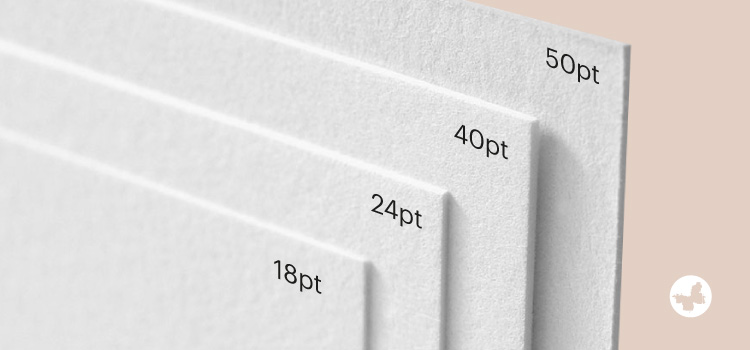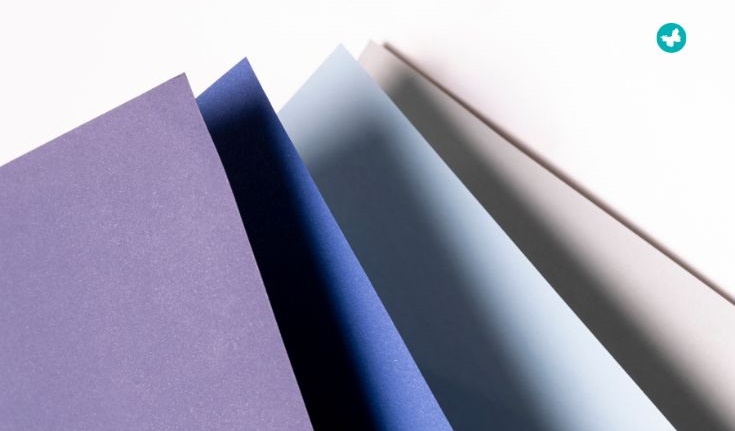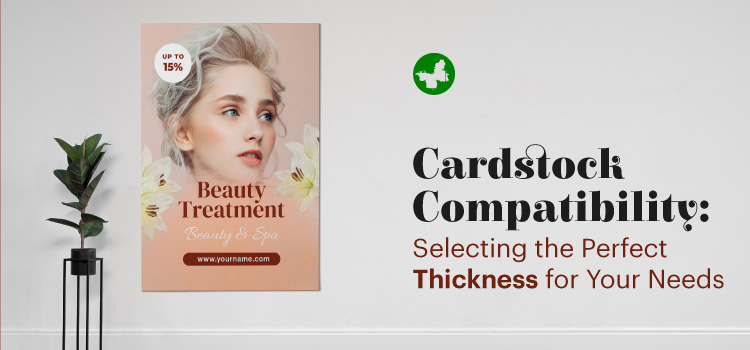There are difficulties in the printing industry, particularly for those who are new to it. A crucial part of ordering print products is choosing the proper cardstock thickness. Although cardstock is thinner and more flexible than cardboard, it is thicker and more resilient than regular printer paper. Because of its flexibility and durability, businesses prefer to use it to create powerful and long-lasting impressions with their printed marketing materials.
Cardstock is known for its toughness, making it perfect for creating high-quality business cards, postcards, invitations, and signs. Its strength allows it to leave a lasting impact on the people who receive or see these materials. However, the most important part is which thickness is better for which products. How can you choose from the list of different cardstock thicknesses? This blog post explains all the important descriptions and tips you need to know before selecting the cardstock.
Contents
Comparing Common Cardstock Thicknesses

When selecting print materials, it is important to consider the thickness of the cardstock. At Butterfly Graphics and Printing, we have a lot of experience as a wholesale trade printer and have worked with different thicknesses of cardstock. Our experience has shown that the thickness of the cardstock should match the intended use and purpose of the print. Cardstock comes in four main thicknesses, and every thickness of cardstock has its distinct features and applications:
- 18 pt thick cardstock
- 24 pt thick cardstock
- 40 pt thick cardstock
- 50 pt thick cardstock
Understanding paper weight measurements is necessary before learning about the characteristics of each cardstock thickness. Paper weight is commonly measured using the terms lb, GSM, and pt.
Particularly in the United States, the weight of 500 sheets of uncut paper of a particular size is commonly expressed in pounds (lb). The weight of a one-square-meter sheet of paper is expressed in metric units called grams per square meter, or GSM. In contrast, “points” (pt) indicates the paper’s thickness; a thicker sheet is indicated by higher numbers.
Now, let’s explore these different thicknesses to determine which one would be the most suitable for your needs.
18 pt Cardstock

18 pt thick cardstock is the ideal choice for creating business cards, postcards, and greeting cards, thanks to its combination of strength and aesthetic appeal. Its thickness isn’t extreme, yet it presents a satisfying level of rigidity that assures your cards won’t easily bend or tear.
This material supports a sleek, professional appearance, a key factor for creating that crucial first impression with your business card or postcard. Its compact form allows you to effortlessly carry numerous cards without feeling bulky. Highly resistant to everyday handling, this type of cardstock ensures your business cards remain intact and sharp-looking. In a nutshell, 18 pt cardstock delivers durability, style, and convenience for your business card needs.
24 pt Cardstock
The 24 pt cardstock is more suitable when you require extra strength and thickness in your materials. Ideal for projects like hanging signs, custom tags, or luxury business cards, this cardstock ensures your end product showcases quality and sturdiness. Because it’s thicker than the 18 pt option, it has enhanced durability. In summary, when choosing a cardstock with resilience and a luxurious feel, the 24 pt cardstock is an excellent option.
40 pt Cardstock

The 40 pt cardstock offers an excellent balance of solid durability and manageable weight. It’s perfect for harder requirements, like high-end packaging, marketing materials, and heavy-duty ad signs expected to endure rougher situations. Unlike usual business cards that stay in wallets or cardholders, these materials face more rigorous circumstances. They might be exposed to heavy handling or transport. Despite all these, the 40 pt cardstock maintains its form and quality. It’s tough and sturdy, yet not too heavy, making it easy to handle. So, for a durable, quality appearance that can withstand tougher conditions, the 40 pt cardstock is a fitting choice.
50 pt Cardstock
When you need your printed items not just to grab attention but also to hold up well over time, the 50 pt cardstock is a great option. This great durability is perfect for items like large celebration signs, posters, and promotional signs that may need to stand for quite a while and still look good. Or perhaps high-quality marketing presentations, where you want the materials to look luxurious and leave a strong impression. The 50pt cardstock does this by providing a thicker, sturdier base for your prints, giving them enhanced quality, long-lasting durability, and a more premium feel. It’s a top choice when you aim for longevity and a touch of luxury.
Tips for Choosing the Right Cardstock Thickness
The intended durability, feel, and use of the finished product determine the optimal cardstock thickness for printing materials. Thinner cardstock (less than 18 pt) is appropriate for flyers, brochures, and posters where cost and flexibility are important. On the other hand, thicker cardstock (such as 18 pt or higher) is typically chosen for items needing a high-end, robust feel, such as business cards, invitations, and high-end brochures.
For promotional signage, packaging, or premium business cards, you can choose one of the thickest options available, 50 pt. This will guarantee the durability and impression of your print product for a long time. For materials like POP displays that are subjected to harsher conditions or will be handled frequently, 40 pt is also a good option. It is recommended to consult with your print partner and ask their expert opinion for selecting the cardstock thickness for different marketing materials.
Conclusions
As you start your printing journey, it’s important to consider the coatings, finishing options, and print sides that best suit your needs. At ButterflyGP, as a wholesale trade printer, you have the power to customize your print job. You can select from various coatings, printed sides, and size options, among other choices.
Ultimately, the goal is to bring your message to life in a way that is clear, visible, and impossible to ignore. The quality of your print largely depends on the thickness of the cardstock you choose. It’s crucial to make a wise choice in selecting your cardstock to ensure that your message stands out, loud and clear, and perfectly aligns with your purpose.
